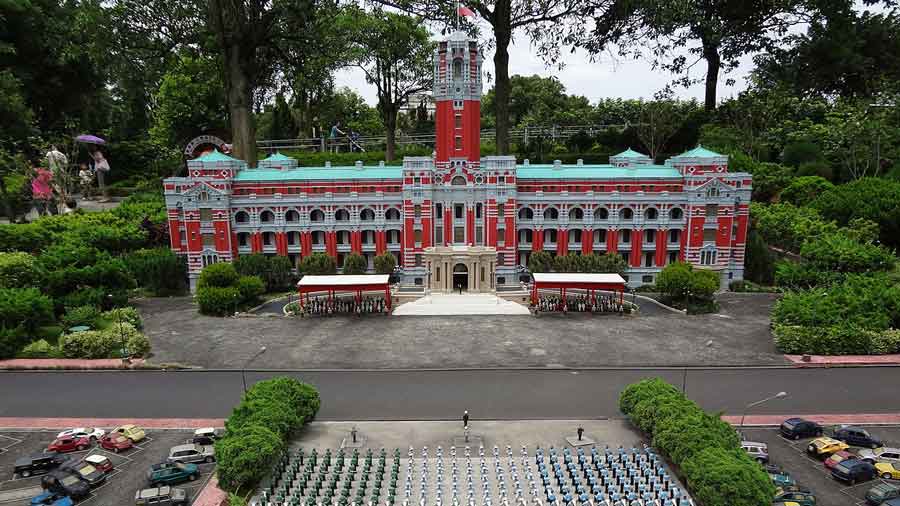My Taiwanese friend, Tsung-Chi Cheng, took me to the Window On China Theme Park in Longtan District in Taiwan, which boasts of intricately crafted miniatures of some of the architectural marvels of the world — replicas of famous Longshan Temple of Taiwan, Beijing’s Forbidden City, England’s Stonehenge, the Leaning Tower of Pisa, the Statue of Liberty, the Lincoln Memorial, Japan’s seven-storied Pagoda of Nara and, of course, our very own Taj Mahal, among other things — all built on-site in a precise 1:25 scale. The theme park’s owner was possibly inspired by the seven-decades-old Madurodam, a miniature park in the Netherlands — the most famous one in the world.
Why miniatures though? The dazzle of little things is special. The stories of Tom Thumb, Thumbelina or Buro Angla continue to allure people. Downsizing is thrilling; a 145-feet tall replica of a skyscraper from a faraway country (the Burj Khalifa was replicated as a Durga Puja pandal) may draw public attention that dwarfs that of the original 2,722-feet structure. Yet, downsizing is not without problems. In his 2018 book, In Miniature: How Small Things Illuminate the World, the British journalist and author, Simon Garfield, provided a delightful and illuminating investigation into our peculiar fascination with making things small, and what small things tell us about the world at large. Garfield explored history, art and the psychology behind making a scaled-down world. Subsequently, in an article in The Guardian, Garfield reiterated that the appeal “lies in our desire for mastery and elucidation. The ability to enhance a life by bringing scaled-down order and illumination to an otherwise chaotic world — a world over which we may otherwise feel we have little control — cannot be overvalued.”
A miniature park is a collection of miniature buildings and models, usually built for touristic purposes. Some attempts to build such structures were made in India too — at the 33rd India International Trade Fair in 2013 at Pragati Maidan, the students of Lovely Professional University displayed a representation of 600-acres of their campus at a scale of 1:40. In a bid to promote tourism, the Karnataka State Tourism Development Corporation plans to set up a miniature park on the Mysore-Bangalore Highway before tourists reach the city in order to inform visitors what awaits them.
While there are numerous such miniature parks in different countries, we do not have a full-scale one in Calcutta yet. Of course, one may find a pyramid or an Eiffel Tower replica in some amusement parks or even a replica of the Big Ben in the city. But do we really need a full-scale miniature park in or near Calcutta? What we have instead is rather special and, possibly, unique — a dynamic miniature depiction of the marvels of the world during the city’s biggest festival, Durga Puja. Models of world’s topmost tourist attractions — from the Angkor Wat, the Meenakshi Temple and the Pyramid of Giza to ancient or medieval fortresses of Karnataka or Rajasthan, and virtually almost every structure imaginable is recreated with utmost care and tremendous passion, by spending lot of money, to attract millions of people. This is an annual miniature park, indeed. Temporary, ever-changing, and full of surprises each time.
Atanu Biswas is a professor at the Indian Statistical Institute, Calcutta











